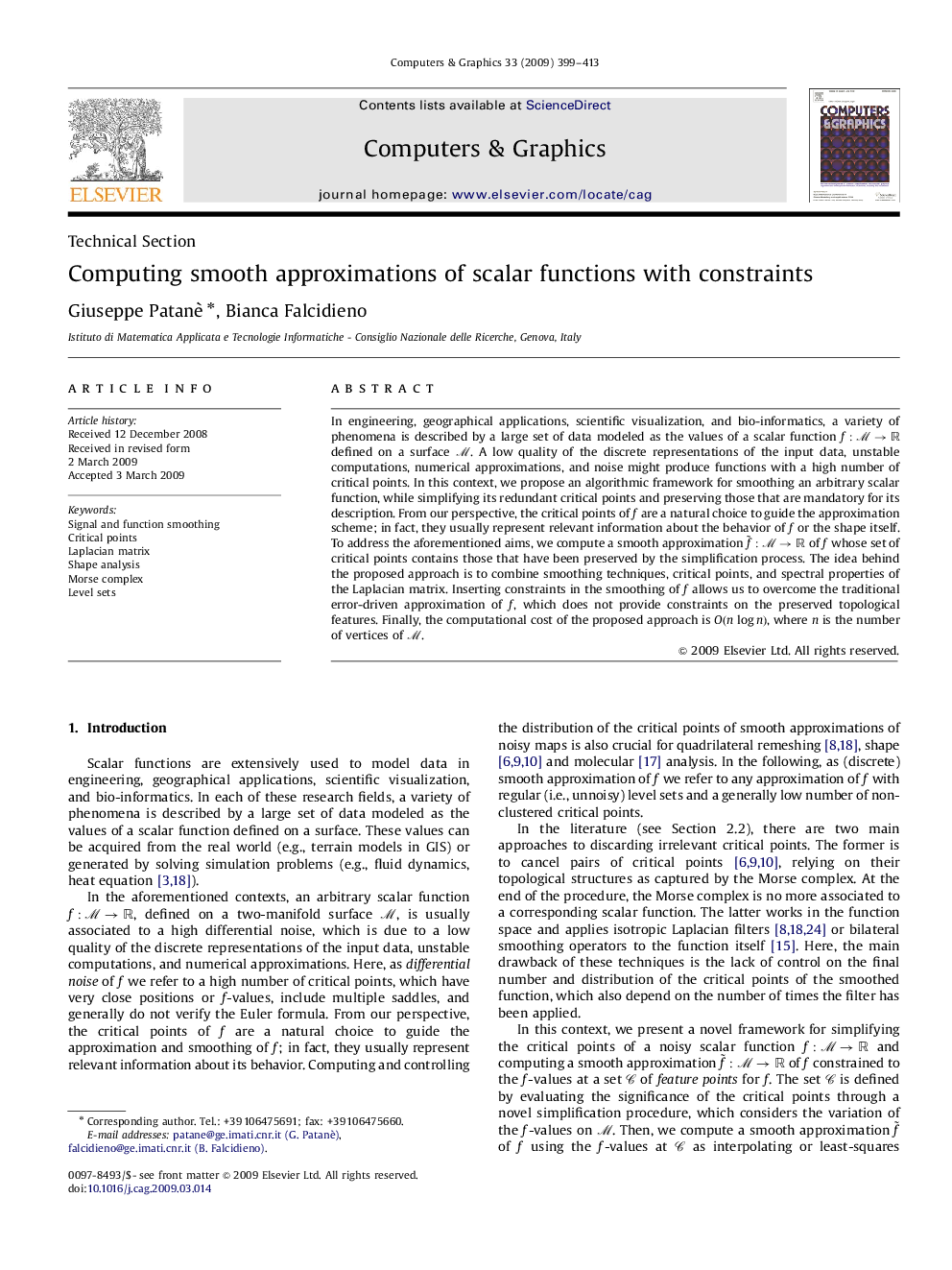| Article ID | Journal | Published Year | Pages | File Type |
|---|---|---|---|---|
| 442721 | Computers & Graphics | 2009 | 15 Pages |
In engineering, geographical applications, scientific visualization, and bio-informatics, a variety of phenomena is described by a large set of data modeled as the values of a scalar function f:M→Rf:M→R defined on a surface MM. A low quality of the discrete representations of the input data, unstable computations, numerical approximations, and noise might produce functions with a high number of critical points. In this context, we propose an algorithmic framework for smoothing an arbitrary scalar function, while simplifying its redundant critical points and preserving those that are mandatory for its description. From our perspective, the critical points of ff are a natural choice to guide the approximation scheme; in fact, they usually represent relevant information about the behavior of ff or the shape itself. To address the aforementioned aims, we compute a smooth approximation f˜:M→R of ff whose set of critical points contains those that have been preserved by the simplification process. The idea behind the proposed approach is to combine smoothing techniques, critical points, and spectral properties of the Laplacian matrix. Inserting constraints in the smoothing of ff allows us to overcome the traditional error-driven approximation of ff, which does not provide constraints on the preserved topological features. Finally, the computational cost of the proposed approach is O(nlogn), where nn is the number of vertices of MM.
